
UPDATED REVIEW – January 29, 2017 – Kawai ES100 88-key portable graded/weighted hammer action digital piano – Recommended as a “best buy.” – UPDATE: The Kawai ES100 is now discontinued and just replaced by the new & improved ES110. Go to the following link to read my review of the Kawai ES110 digital piano: Kawai ES110 Review.
| ES100 with optional stand |
Previous ES100 Review: The Kawai ES100 ($699US internet discount price) is part of the “ES series” of digital pianos and offers similar quality to the higher priced ES pianos, but at a much lower price point. This little baby is definitely not a toy and I have been able to play it multiple times. The piano is offered in the US in a satin black color only and the design is sleek, elegant, and simple with eight small round push buttons and one volume slider control on the top above the keys near the left side. The buttons are solid, easy to push, and there is enough space in between the buttons so they’re not all
![]() jammed together. Also, there are no speakers or speaker grill cloth showing on the top of the piano…just a nice slightly curved top and clean lines with a large included music rack…a well thought out design considering how much this piano can actually do and how nice the sound is. The piano is relatively small and lightweight and you can move it pretty easily by itself with no stand. It is only 52″ wide and 11″ deep so doesn’t take up much space.
jammed together. Also, there are no speakers or speaker grill cloth showing on the top of the piano…just a nice slightly curved top and clean lines with a large included music rack…a well thought out design considering how much this piano can actually do and how nice the sound is. The piano is relatively small and lightweight and you can move it pretty easily by itself with no stand. It is only 52″ wide and 11″ deep so doesn’t take up much space.
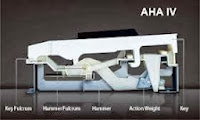
I did not have high expectations when I first tried it out because of the low price and I thought that Kawai would have to make some drastic compromises to produce a good digital piano at $699 that would up in quality. Well I am happy to say that I was wrong and that Kawai exceeded my expectations in a number of ways. The ES100 has been out for about 2 years now and is still ahead of the pack and was designed to do a few things very well in its price range. This includes having a noticeably superior and sturdy (and quiet going both up & down) graded hammer key action movement (Kawai calls it AHAIV-F Advanced Hammer Action), realistic stereo acoustic acoustic piano sound reproduction with smooth velocity response, natural tonal dynamics, and a fairly even volume balance across the entire keyboard as well as solid piano pedaling performance.
The ES100 offers many other features which I will talk about below, but this model was obviously built for the primary purpose of offering the best digital piano playing experience (in a portable model) under $1000 and it includes 192-notes of piano polyphony memory (a good thing) which is the highest in its class in this price range for a portable digital piano. The internal speaker system has a fairly good volume at 14 watts total power going through two higher quality speakers which are positioned underneath the keyboard. I put the piano speaker system through its paces and the sound was clean and did not distort even at loud volume. The overall volume for a small portable piano like this is good for a small to medium sized room.
| ES100 control panel |
The ES100 does not have hundreds of instrument sounds, USB flash drive input or USB output, automatic accompaniment styles, multi-track recording, user display screen, duet four hand mode, etc, etc. It is obviously not meant for that which is fine because it is focused primarily on piano playing. It has 8 acoustic piano tones which is a lot, along with a variety of impressive sounding strings, organs, electric pianos, harpsichord, and a few other tones. All of these extra instrument tones are quite good at this price and better in my opinion than the competition for those specific tones. One very cool extra feature the ES100 offers is a drum rhythm section. Playing piano along with a drummer is a fun thing to do and also good training for rhythm and timing and allows a person to experience what it is like to play piano along with a drummer.
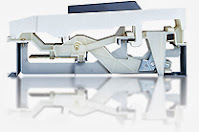
But all the drum rhythms in the world, automatic chord arrangements, extra sounds, or the latest USB technology is useless in my opinion if you do not have a realistic piano playing experience with a solid key action and good smooth dynamic acoustic piano tone. Although piano touch and tone is ultimately a subjective thing, when you compare a digital piano to a real acoustic piano there needs to be some noticeable similarities, so the result is not completely subjective. There needs to be proper key weighting but not too much weight or too little weight. There needs to be a good piano tone but that tone needs to come with a good dynamic range so the sound is different as you are playing softer or harder. Dynamics are difficult to recreate evenly and with a large tonal range but Kawai ES100 seems to do a very good job of this and noticeably better than any new Yamaha digital piano I have played under $1500, so that ability is quite impressive to me.
| ES100 included damper pedal |
Then there is the damper sustain pedal which is sometimes overlooked as being important when shopping for a piano. The piano pedal that is included with the ES100 is a single heavy duty metal piano style pedal that also activates whats known as “half- damper pedaling.” Half-damper pedaling is the ability to have a medium amount of sustain decay time when pressing the pedal down half way. The typical smaller plastic foot pedals that come with other brands can only offer an on/off sustain experience which is the way keyboards behave, but not real pianos. The sustain decay time when holding down the pedal and playing the piano keys is quite long and holds up well across the keyboard which was impressive to me. The longer decay times helps when playing more legato passages of music especially in classical pieces so even more advanced students and players will appreciate that. The included Kawai damper sustain pedal retails for $80 so it is not an inexpensive item to be included and brings the value of the ES100 up even more than it already is. The ES100 can also be connected to a
furniture style stand and a 3-pedal assembly which connects to the the stand which then makes the ES100 look somewhat more like a compact cabinet piano (although it does not have a sliding cover which portables do not). The internet discount price of the Kawai stand & 3-pedal unit together is $230 (pedal board & stand sold separately) but that is optional and not necessarily something you need to buy, but they do make the piano look nice, especially with the pedals being a chrome color, quite attractive. Yamaha & Casio also offer an optional furniture stand and 3 pedal unit for their lower priced current model digital pianos (P115, PX160) which is a good thing. The triple pedal units on all these pianos also supports the half-pedal mode. I did notice that the Kawai pedals were made out of metal instead of plastic as found on other brands and the ES100 pedal assembly and cross bar were thicker and seemed to be more durable than most. Also there is a large height adjustment screw under the pedals to adjust for carpet or hard floors so the price of the ES100 pedal assembly is definitely worth it based on its construction.
| ES100 control panel |
One of the most interesting things about the ES100 that I found is that you can edit the built in piano sounds in a variety of ways (using a menu key chart) and create your own personal custom piano tones that your own ears like:). Once you make those changes and edit the sounds which are fairly easy to do, then you can save those new sounds in 5 memories (4 panel memories plus a power-on user memory). In other words, what ever you do to the sounds including layering two sounds together, splitting two distinct sounds on either side of the keyboard, changing reverb, voicing, touch velocity curve, EQ, brightness, mellowness, and other functions. you can save those new settings so they can be recalled later by touch a button in 4 panel memories, as I mentioned earlier. That is a very cool feature and something not available many other brands of digital pianos. As an example, if you edited the piano sound to your liking and then mixed it with an organ sound, you could save that setting to be easily recalled later while you are playing the piano. Otherwise
 |
| ES100 function navigation chart |
you have to recreate the entire setup(s) every time you turn on the piano, which is no fun. I will say that because there are a lot of editing & user features in this piano, they can be a bit difficult to get to because those functions need to be triggered by pressing and holding a function button down and then pressing a white or black key at the same time to use that feature. It would have been easier & more intuitive to do this using a built-in LCD display screen to see what you’re doing such as what the Casio PX350 portable piano has.
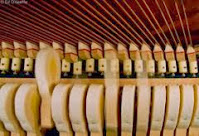 |
| acoustic piano dampers/strings |
The ES100 also has some interesting additional functions built in which give the acoustic piano sound an even more realistic tone than it already has. One of the functions is called pedal resonance which means that which you press the pedal down you can hear the sound of the “virtual strings” echo or resonate just like in a real piano when the pedal is held down. This is not the normal sustain you find on most digital pianos when depressing the pedal (which the ES100 does have), but also a natural organic string resonation that is in additional to sustain. You can control the amount of resonation of the strings from a control function when pressing down the pedal, so that it is not too much or too little, something that the competitive brands in this price range cannot do.
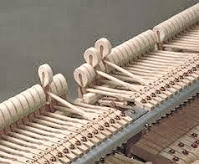 |
| acoustic grand piano hammers |
Two other acoustic piano type features in the ES100 that are also digitally adjustable are called mechanical fallback hammer noise and damper rail noise. This is the mechanical sound of the damper rail and the key action in an acoustic piano when you let go of the pedal or let go of the keys when pressing down and the noise that is made when the parts go back to resting position. Rather than getting too complex about this (I don’t like complexity and it’s easy to that with this stuff) let’s just say that these “noises” give you the feeling you are playing a more organic sounding piano because you hear mechanical noise coming out of the ES100 speakers and those noises were originally recorded from a real acoustic piano and are then heard through the ES100 speakers (or through headphones).
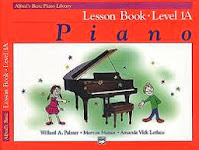
The ES100 does have a built-in digital recorder which offers one track of full piano recording and a 3-song memory to save your recorded songs. This is generally sufficient for most people although some of the competitors have a 2 track recorder separate left & right hand recording. Two separate tracks of recording is a nice feature and I would have wanted to see that in the ES100, but it is not absolutely essential. Most people just want to hear what they sound like regardless of whether the left & right hand are recorded altogether or individually. However, the ES100 does have a built-in music education lesson library consisting of Alfred’s basic piano library of songs books 1A and 1B (a very popular lesson book series) along with Burgmuller 25 Etudes. With the built-in music library in the piano you can purchase the appropriate music books and then play along with the built in songs at any tempo you wish
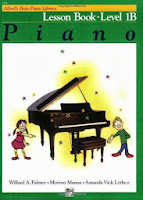
(slower or faster) and also separate out the left hand and right hand parts for playback with controls in the piano accessed by the function button and keys. In this way you if you are a beginner or novice player you can listen to left and right hand parts separately (before you play the song yourself) to understand how each part sounds and to then play each part one at a time along with the song playing back. It’s a pretty cool feature and one that you can take advantage of if you are a beginner young person or adult. Kawai is the only digital piano under $1000 with this kind of built-in lesson song library, but even if you never use this function, it doesn’t really matter because this instrument is really all about playing the piano and having it be the one of the best you can get for a portable 88 key digital piano under $1000.
For those people that might want to play the piano in a very large room, outdoors, at a school, in a church, or other venue, you can connect the ES100 to an external speaker system by way of a stereo output on the piano in one of the two headphone connectors. When you connect in this way you can also decide if you want the internal piano speakers to remain on or not because otherwise the internal speakers would not work under normal circumstances when you plug into a headphone output. But the ES100 has an override function that allows the internal speakers to remain on…very nice. I do wish the ES100 had a USB output to iPad/computer as well as an audio input…that would have been useful. But some people do ask
for MIDI connectors (to connect to other sound modules, etc) which it does have, and you can always purchase a low cost adapter cable to convert a MIDI connector to a USB cable connector so that you can connect the piano to an iPad/computer at that point and use some fun interactive apps for creative visual learning and music playing. I use iPad apps in my studio quite a bit so I would definitely suggest that. Another feature the ES100 does not have is ivory feel key tops which Casio does have as well as Roland under $1000. Although some people do like that and it can be nice, it is not absolutely necessary and real acoustic pianos these days (and have for many years) use regular white hard plastic keytops and not ivory, so that material (simulated or organic) is not something you would see on a regular piano anyway.
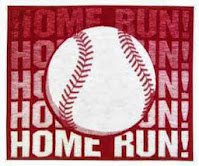
For the money it is my opinion that the Kawai ES100 is, overall, the “home run king” of low priced portable digital pianos for realistic piano sound, key action authenticity, and pedaling realism. The key action is noticeably smoother and more realistic than the Yamaha GHS and GH key action found in the lower and higher priced Yamaha DGX and Arius models (including Clavinova CLP525 & CLP535 GH3), Roland ivory-G action, and a few other brands. Key action movement and realism is the number one feature to focus on in a piano and I have done reviews of those pianos which you can read about on my blog. When you put it all together having a quiet quality hammer key action, a large amount piano polyphony memory, smooth touch, elegant piano tone and combine it with all the other features I mentioned in a sleek, elegant little portable cabinet weighing in at only 33lbs (without stand and extra 3-pedal unit), you have a real winner, especially with the name Kawai attached to it.
| Kawai ES100 with stand |
It is worth noting that I have had many people ask me about 88-key digital portable pianos (without a lot of “bells & whistles”) for around the $500 (approx) price range. There is a variety of choices out there including the new Yamaha P45, Yamaha P115, Casio CDP130, Casio PX160, Korg SP170S, and Korg SP280. But I would suggest that you consider moving up in price to the Kawai ES100 ($699 internet discount price) if you can afford to do that because at the end of the day, if you intend on keeping the piano for awhile, your investment will go much further and the student or player can progress in their music making for years to come as opposed to growing out of the piano too soon.
| Kawai KDP90 |
*Special note: If you do not absolutely need a lighter weight portable digital piano like the ES100, then you may also want to consider the Kawai KDP90 furniture cabinet digital piano ($1149 internet discount price). Essentially, the KDP90 is the same piano as the ES100 except that it is in an attractive furniture style cabinet with a more powerful & resonate internal speaker system and comes with a matching padded bench. Although it has a couple of cool educational features the ES100 does not have, the KDP90 does not have the drum rhythm patterns and a couple editing features the ES100 has. But unless you need the portability and the ES100 rhythm and editing features, the KDP90 may be a better choice for you. When you add the cost of an optional Kawai stand, 3-pedal unit, and a suitable padded bench to the ES100, the KDP90 and ES100 are getting close the same price. Read my review of the Kawai KDP90 at the following link before you make a decision: Kawai KDP90 Review
If you want more info on new digital pianos and LOWER PRICES than internet discounts, please email me at tim@azpianowholesale.com or call direct at 602-571-1864.
* I recommend eMedia educational software. If you decide to make a purchase after clicking on link below, I have arranged a big discount for you direct with eMedia for their educational software and that discount price is displayed through this link only! I want to see everyone learn to play and enjoy piano!















Dear Tim Praskins,
Thank you for your review, I was waiting for it! 🙂
In fact, I got excited when I first find out about this model, especially the key action. However, I didn't like the quality of the sound much. Which is fair for the price.
For that, my question is, have you tried any of the virtual piano programs? Can I connect this piano to my computer with, for example, "Galaxy Instruments' 'Vintage D’" and have a decent voice along with its other specifications? Also, which program would you recommend?
Thank you 🙂
Actually the sound quality is excellent for the price and better than many digital pianos twice its price. The piano sounds on the ES100 are also editable so that they can be modified and customized in a number of ways and the new sound can be saved in memory. As for other external piano sounds from software, yes, the ES100 can be connected by MIDI to a computer to act as a controller for sounds in the computer.
Thank you very much 🙂 You really helped me in my decision 🙂
One more question (hopefully the last!), how about the sound decay without using any pedal? How long will it take? Or is it a complete cut-off? I have read somewhere that this problem of the "cut-off" sound was there with one of Roland models which is by far more expensive than this.
This piano is too good to be true! 😀
Decay time (or cutoff time as you call it) while holding down a key and not using the sustain pedal varies based on which note you play. The higher the note the less decay time. The lower the note the more decay time which is also true when holding the pedal down. Without holding pedal down the full decay time on middle C is approx 10 seconds with higher key decay times going down to about 5 seconds and lower keys up to 20 seconds…all of which is normal and good. If you live in the US and want more info incl best prices and place to order this or another digital piano, please let me know.
I am getting ready to upgrade from my Yamaha p105 and, based on your recommendations, I want either the Casio px150 or Kawai es100. You like both of these. Which has the better key action? Please let me know. Thank you.
Both pianos would be good choices but it just depends on your musical goals and playing skill level (along with budget). I can give you more info if you email me directly as that would be better
Dear Tim,
Sorry for my late reply. What I meant by "cut-off" is when you lift your finger from the key without using a pedal and hear the sound. For some digital models, like one of Roland's the sound was cut right after lifting your finger. I hope I could made it clear as I am not a native English speaker.
Unfortunately, I don't live in the US 🙁
But thanks again for all your work ^_^
A good digital piano is made to reproduce the characteristics of a regular acoustic piano. Regular acoustic piano notes stop almost immediately (because of the felt dampers inside the piano) when the key is released without pedal. A digital piano needs to do it the same way. The ES100 works like a real piano in this way.
Thanks for your nice review. I am getting my first DP. My heart went for Yamaha P105 before I saw this review. Though I really love the sound of P105, I think I will get this one.
If you live in the US I would recommend that you contact me directly by email first before you buy either piano as I have some additional details about the pianos that you may want to know.
Just got a px780…..this better?
Hi Tim,
Thank you so much for posting your digital piano reviews, it has tremendously helped me. I am still debating though between the Kawai ES109 which, with all accessories, comes to a bit over $1000, and the Casio PX850. I wish I could just try them out but it will probably not be possible. Which one do you think is best for an intermediate player?
Thank you again,
Lauren
Thank you for your reviews. This digital piano looks really nice, but you mentioned that it does not have a 4 hand duet feature. As my daughter grows in her ability to play, I sometimes like to play duets with her for fun. I've always had an acoustic piano, so I'm curious – what happens on a digital piano when you play a duet? Are there other models that work well for duets? Aside from that, this model seems to have everything I am wanting, so I am trying to weigh how important a duet feature is to me.
Thank you!
Heather
Hi Tim,
Hoping that you could provide me with some recommendations.
I am a beginner and looking to purchase a keyboard for learning purposes. I've have recently been introduced to Kawai ES100 and Yamaha P105.
From above comments, it appears that you have one additional information in regards to these keyboards?
Are you able to provide your recommendation on which keyboard would be best and is most similar to a piano.
Any guidance or recommendation you can provide is greatly appreciated.
Thank You!
Please email me directly and I can give you more detailed info. Thx
Heather,
You ask some very good questions and it would be better if you could email me directly so I can give you some detailed info and explanation…thx
Hi Lauren,
Both models have their good points and either one could work for you depending on your musical experience and goals. It would be better if you could email me directly so I can give you a detailed response and answer questions.
Hi, Great review!t The mechanism is different from the model ES7, it isn't a RHII and even RHIII.
Also missing the line outputs. I can connect to the same external amp via the output jack? The result is the same or less?
Mr. Praskins, that review was extremely detailed and helpful – thank you. I'm in the market to upgrade from my current inexpensive 61-key Casio, and I think you've sold me. A question about the output to a PC — I'm often in a position of having to send sound files of vocal parts to people in my choir who don't read music. My cheap Casio doesn't have this capability, so I just put my laptop next to the keyboard and use the Sound Recorder to create a wma file. But with the ES100, are you saying that (with a MIDI adaptor), I can just connect the keyboard to my PC, and record whatever I play on the keyboard directly into a midi file? (this is probably a stupid question, but I'm a novice at this!) Thank you.
Hi Mr. Prenkins. I would like to know which you think sounds and feels more like an acoustic piano, this kawai es100 or the casio privia px750? Thank you sir and have a nice day.
How easy is it to disconnect/reattach the ES-100 from its furniture stand so that it can be used as a portable? Thanks!
I went to the Music Store in Koln to find a better stage piano then I use now (technics P50, years ago the very best stage piano and even now quite good) I thought that the yamaha P105 would win. Then i tried the Kawai ES 100 (the normal Kawai study piano i dislike…) and i was highly surprised! The best digital piano i ever played of! And….using the headphone output won 't stop the speakers so no audio out is not a real problem (that was, till now, my reserve not to buy! Txs for your very good review!
This comment has been removed by the author.
I am thinking of getting this for my daughter… thank you for the review! Did i get it right? This can't play four handed duets? I hope you could give me more info… thanks
The ES100 does not have the 4-hand duet function, however the new Kawai KDP90 furniture cabinet model does have the 4-hand duet function and is basically like the ES100 in most other ways. Please email me for more detailed about the pianos including where to find lower than internet prices if you are in the US
How does the key action compare to the one in Casio px350? Is it heavier or lighter?
What is the height of the ES100 when mounted on HML-1 stand? Specifically the height of the keys from the floor.
Thank you very much.
— P
This was just such an amazingly helpful review that I almost hate to ask, but here goes, a very, very, very novice question – I'm thinking about starting to record straight to my laptop (I am extremely oldschool…seriously…we're talking Tascam portable 4-track oldschool) and I know that sometimes with computer connections there can be serious lag between keyboard and computer, making it a bit difficult to lay down good piano tracks. Maybe that has more to do with which computer program one is using? Anyway, I suppose that my question is, if I'm going for a piano more focused on realistic sound and good gigging (I play solo and sing, there's no band, so having sweet piano sounds that will resonate beautifully in a club is super important) is it worth the inconvenience of not having the computer interfacing ability for recording? Basically, is it going to be a serious problem if I suddenly decide to do some home recording with this baby?
I do not recommend "old school" connections and/or devices in this case. If you can make the somewhat small investment, I would recommend you record digitally and get a small multitrack digital recorder that would allow you to record direct and save to wav or MP3 files and also be able to easily edit and mix. One such example is the Zoom H4n recorder.
My first digital piano was the Kawai ES 4 (with AHA 4) and I kept it for 7 years. I grew up playing on an acoustic upright Yamaha that was very smooth and expressive, but my holy grail of keyboard action was the AHA 4, because the bouncing that it offered. The Kawai ES 4 helped me develop my "rebetiko piano" technique. For the first time someone with a piano could play rebetiko music and compete in speed and expressiveness with the great bouzouki legends. Unfortunately after many years the keys started making a lot of noise and opening the piano to clean it and grease it made things worse. I also have a Roland RD-64 with Ivory Feel-G action that I use at work because of the small size and weight. I find it very sluggish and it is the worse thing for my "rebetiko piano" technique. It just can't follow the speed of my fingers, the only noticeable good thing about this action is that the keybed seems very rugged. After one year all the keys are still on the same level and they don't move right and left. I recently also bought the Kawai ES-7 since I sold my old ES-4. The action of ES-7 is more similar to an acoustic piano action but it is not as bouncy as the one on ES-4. Rebetiko music that was not written to be played on a piano and it is based on extreme fast and expressive articulation, needs the bounchy action of AHA 4. If Kawai could make a 73 or 76 key instrument with AHA 4, on board 15 watt speakers (facing the audience) would include 1/4" audio inputs and outputs, the 200 plus sounds of MP7, that would weight about 15 kilos and would sell for about 900-950 euros, they wouldn't be able keep up with the demand.
very interesting analysis of piano actions that you have experienced. Kawai already has a problem keeping up with the demand of their existing digital piano models and it is highly unlikely they will produce a completely new & unique model like what you suggest.
if I keep the piano on a table will the sound be muted as the speakers are beneath the piano…….please help as its the only point which is stopping me from taking this
Yes, it definitely can mute the sound depending on exactly where the piano sits on the table
Hi!
Which piano would be better, Rolnad F-20 or Kawai es100?
There really is no comparison. The Kawai ES100 is a far more advanced piano in terms of a correct piano key action, piano sound realism, and pedaling realism.
Hi Tim
Thank you for your review.
Can you sugest a external speaker in a low price range?
Hi Tim,
Very nice review. I have also been thinking of buying ES100 (would prefer ES7, but getting out of my price range) to do some gigs where accompany myself while singing. I have the same question as the last commenter – can you please suggest an external quality speaker in a low price range?
Great review, as always – already bought a PX5S, based in large part on your review. Now I just ordered the ES100 for band practise.
One question: can I just connect a mono jack to the stereo headphone to connect up to a mono amp, or will that e.g. give me a low signal or other problems?
Thanks for all your works, cheer.
Hi, Tim
I enjoyed reading your comment.
I am considering to buy either Kawai ES100 or Casio PX350. My choice should be determined by (1) "playability" (getting what I want from the piano while playing it) and (2) "durability and quality control" (as I hate to deal with any kinds of repairing / refunding / exchanging issues).
What would you recommend between these two regardless of the price difference?
Thanks a lot!
Charles
Hi,
I can't choose between the Kawai ES100 and the Korg LP380..
Which one has the best key action and sonority ?
I already tried the RH3 from the SP250 and liked it, but I can't find an ES100 to compare :/
Thanks in advance for your advice.
Would you recommend the ES 100 or KDP 90 for a 4 year old starting lessons? We can't afford an acoustic piano.
Hi Mr.Praskins
I bought the Kawai ES100 because of your review and I love it. I just wanted to ask if you can use the 3-pedal unit without the stand if possible. Please reply. Thank you.
Both have the same keyboard action and sounds, but the KDP90 has better speakers and already comes with 3 pedals and cabinet like furniture.
It depends on you, If you want something portable the ES100. If you dont want to move it around the KDP90. You cant go wrong with neither one, it depends on your own needs.
Thank you so much for the review, really really helpful! You mentioned about a function which allows to keep the speakers on when you plug your headphones in, but I have not found such a thing in the manual. I'm buying this model and this function really interests me. Can you please tell me something more about that ? It's so annoying when you connect your piano to an external system and you hear nothing from it. Thanks!
Dear Tim, thank you for such a great review on ES100. I am about upgrade from Casio CDP 220R. I really liked ES100 but recently got to check out Yamaha P115 which over all gave a nice feel. I would request for your viewpoint and liking between ES100 & P115 if the instrument is to be used mainly for pure piano work and rarely for other features. Thanks & Regards.
Hi, I've read in the owner's manual that ES100 has an option to opimise sound when the instrument is put on a table.
I'm not sure about choosing either ES100 or the Casio PX-160.
Which one is better?
The ES100 has two headphone sockets. One could be used to plug your headphones into whilst the other could be used as an input to an external audio amplification system. Hope that helps. Ronaldo.
I'm 64 and always wanted to leard how to play piano. I have a Yamaha PSR-s670 that has anything and everything under the hood except good piano sounds and it has organ style keys.
I play by ear and have the attention span of a fruit fly so it's been hard to learn without the feel of weighted keys. Been buying and flipping digital pianos the last year and gone through: Yamaha DGX650, P45, P105, P120, P95
Hated them all because they all sounded like mud and the weight was heavy and didn't feel graded at all…
After having a heart attack a year ago my quest to learn is getting more attention and I think for my needs the Kawai ES100 would be the smart choice. Not trying to ever play anything that would be worth recording or letting anyone hear but want to have some fun and maybe learn a few songs. I just couldn't feel the love with the Yamaha experience.
Thoughts??
Any idea when you will have a review for the upgraded version to this, the ES 110?
my review of the ES110 is now up on my blog. You can go to the tab "search reviews" and find it listed there under Kawai